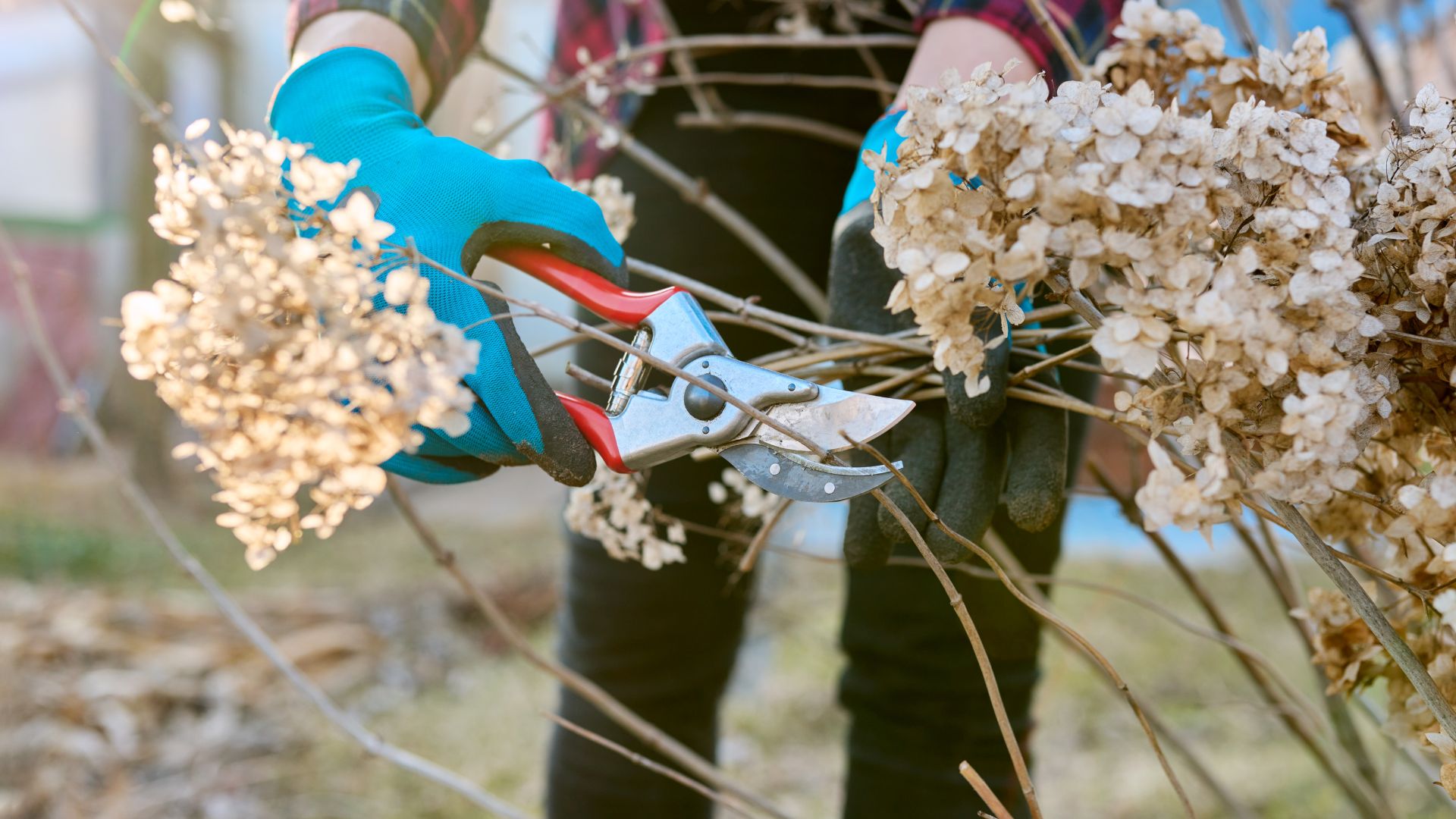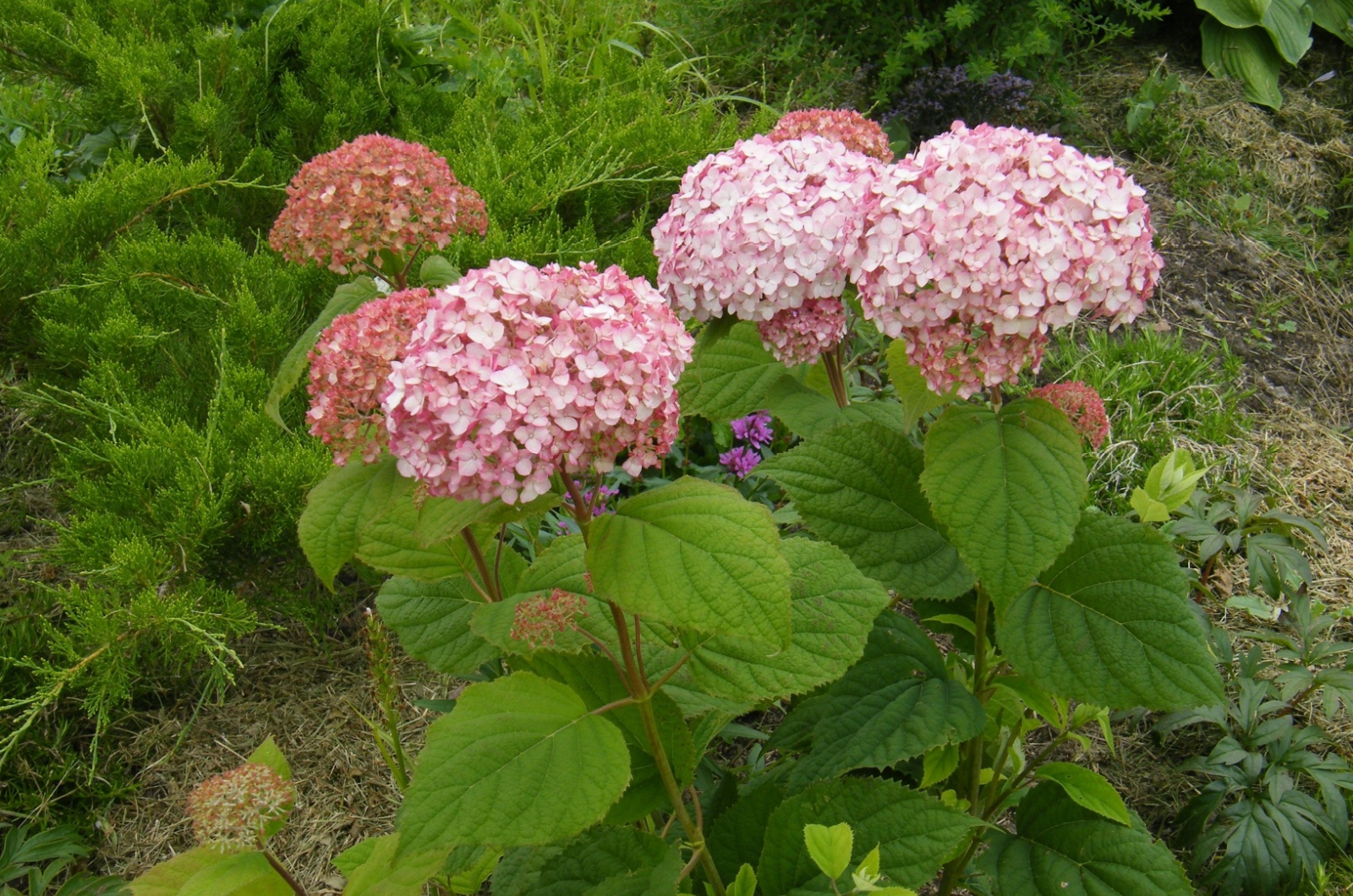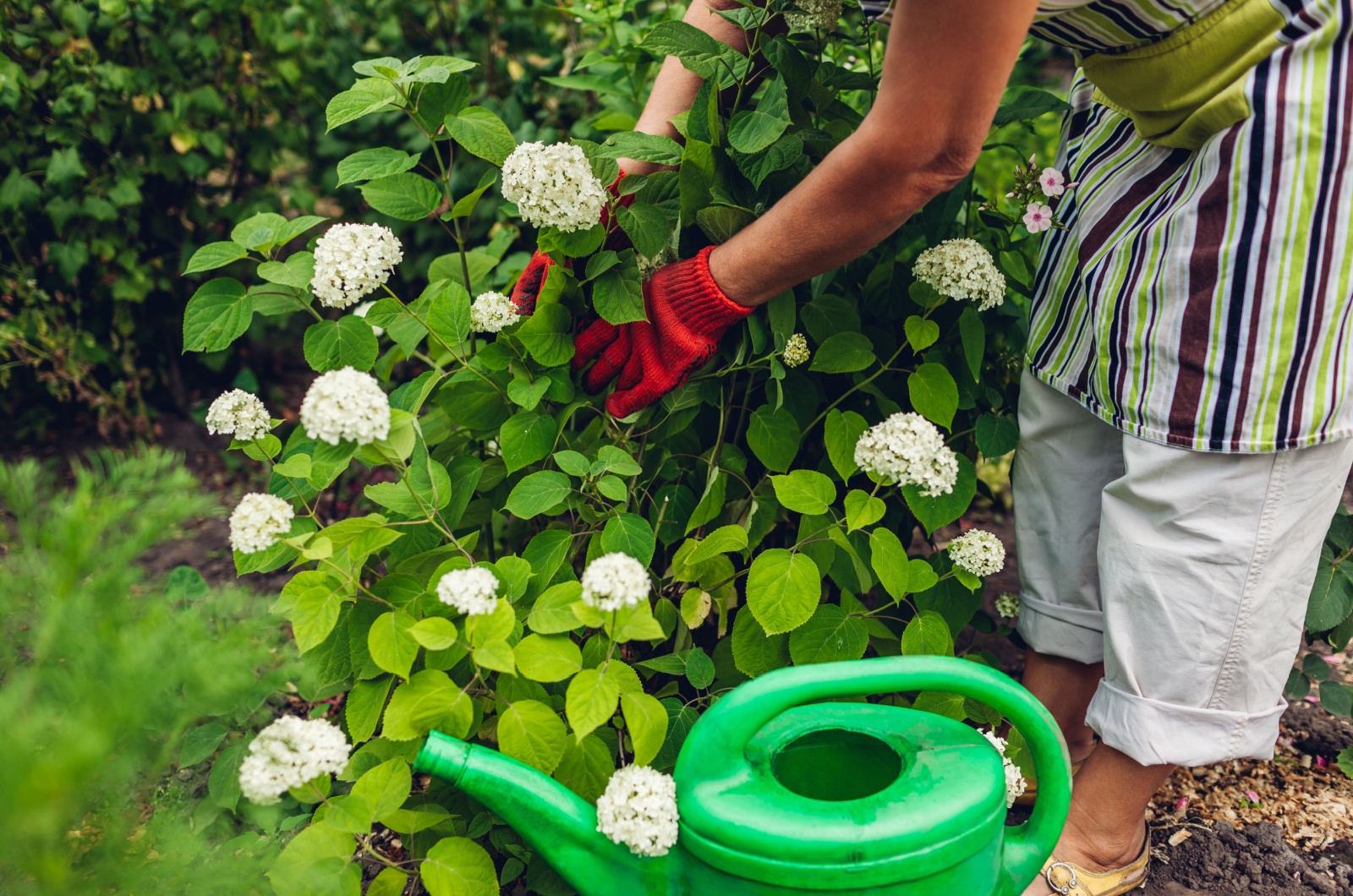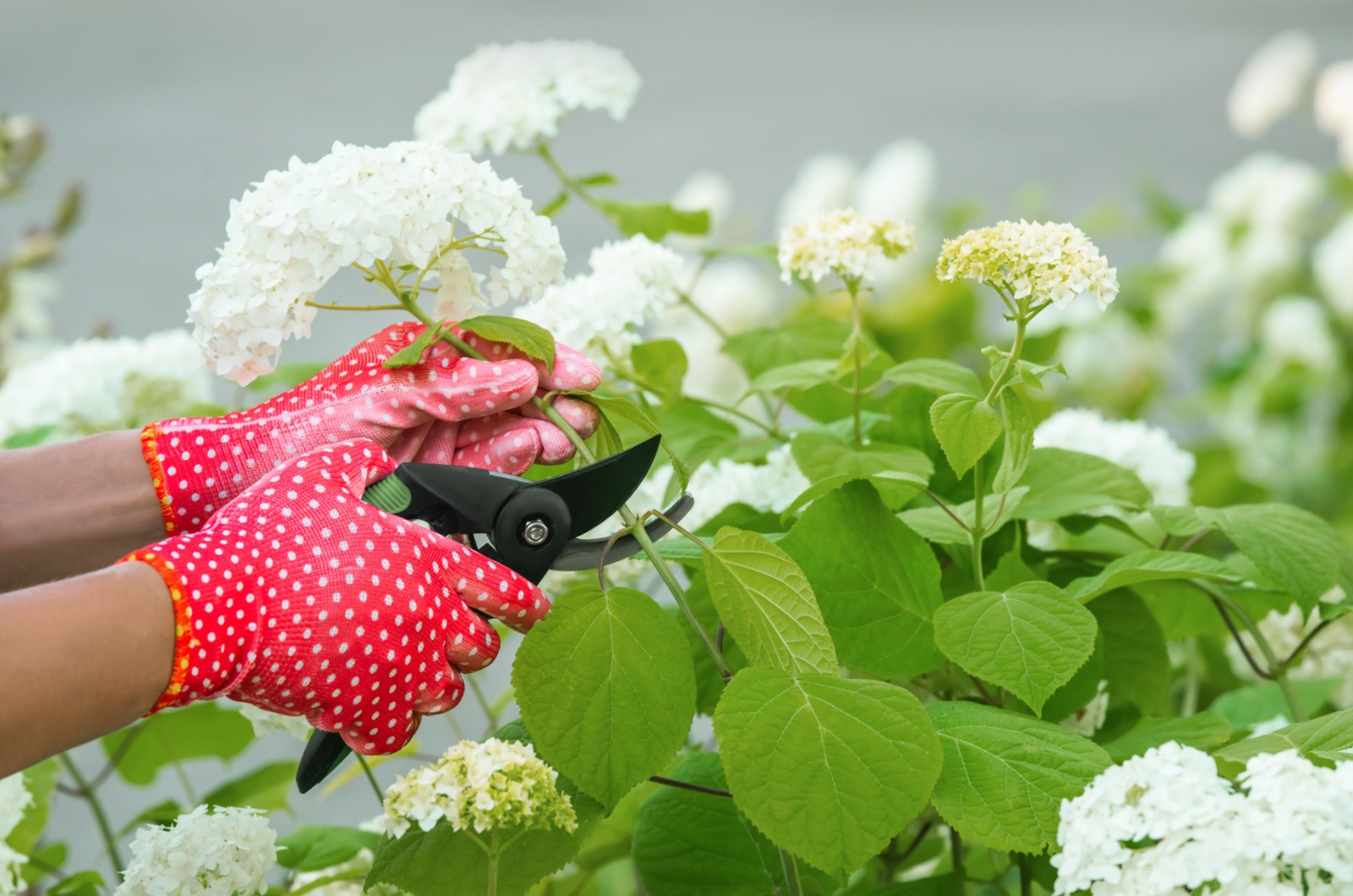Ah, beautiful hydrangeas – the stars of my summer garden, but they sure know how to keep me guessing when it comes to pruning!
Now that the crisp fall air has rolled in, you might be staring at those once-vibrant flower heads, now papery and brown, wondering if you should give them a trim.
The truth is, when and how you prune depends on a few factors: your growing zone, the type of hydrangea, and whether the plant has entered dormancy yet. Before you start cutting away, it’s worth following the best methods and timing for each type of hydrangea.
Luckily, I’m here to help!
So, keep reading as I am about to share all the things you need to know when it comes to pruning hydrangeas in the fall.
Figure Out The Type Of Hydrangea You Are Growing First
You can’t just go and prune your hydrangeas whenever you want. Figuring out the type of hydrangea you have will help you decide if pruning in the fall will make your blooms flourish or flop.
The secret lies in whether your hydrangea produces flowers on new wood (growth from the current year) or old wood (growth from the previous year).
Here are the most common hydrangea types and some pruning tips:
• Panicle hydrangea (H. paniculata) – these beauties flaunt large, cone-shaped blooms that appear on new wood sprouting in spring. You can give them a good trim while they’re dormant and they’ll bounce back quickly.
• Smooth hydrangea (H. arborescens) – known for their big, snowball-shaped flowers, these hydrangeas also bloom on new wood. Prune away and get ready for a lovely flower display!
• Mophead hydrangea (H. macrophylla) – often called bigleaf hydrangeas, these popular plants feature beautiful pink, purple, and blue blooms that blossom on old wood. No fall pruning here if you want to keep the colors coming!
• Oakleaf hydrangea (H. quercifolia) – with leaves that resemble oak foliage, this variety produces lovely cone-shaped blooms on old wood. In this case, save your pruning shears for spring.
Also read: These 15 Low-Maintenance Hydrangeas Are Nearly Impossible To Destroy
Then Choose The Right Time To Prune
When it comes to hydrangea pruning, knowing whether your variety blooms on new wood or old wood will determine the pruning window.
• New wood hydrangeas (like panicle and smooth varieties) are a bit more forgiving. It’s best to wait until early winter when the plant goes dormant for a good pruning session. However, if you want to tidy up your garden in the fall, go ahead and snip off those dried blooms and give the plant a nice shape.
• Old wood hydrangeas (such as mophead and oakleaf) have different needs. These beauties should be pruned right after they finish blooming in spring or summer. Most experts advise against any pruning after August 31 because if you prune them in the fall you might ruin their blooming next spring.
Also read: Start Preparing Your Hydrangeas For More Colorful Blooms Next Summer This Fall
And Finally, Give Them A Good Trimming
Okay, so once you’ve determined when you are going to prune your hydrangeas, it’s time to find the best methods for it.
And as there are two types of hydrangeas, they are also going to need different pruning techniques.
Pruning New Wood Bloomers (Panicle And Smooth Hydrangeas)
1. Deadhead blooms – as the panicle blooms stay on the stems until they dry, consider removing them as they fade during the growing season. This little trick can help extend the blooming period for your hydrangeas.
2. Prune to maintain shape – in late summer and fall, selectively trim any overgrown branches and dry flowers to keep your hydrangeas looking tidy in the garden.
3. Hard pruning when dormant – timing your hard pruning depends on your climate, but generally it should be done in late winter or very early spring. Aim to remove about one-third of the plant’s total mass to promote fresh new growth.
Pruning Old Wood Bloomers (Mophead And Oakleaf Hydrangeas)
1. Deadhead blooms – for these varieties, it’s important to trim off the faded blooms immediately after they wilt. Use bypass clippers to make clean cuts near the base of the blossoms during summer or very early fall.
2. Remove broken parts – keep an eye out for any broken branches and remove them as soon as you spot them. Inspect your hydrangea in early spring to cut away any wood that didn’t survive the winter.
3. Pruning due to overgrowth – if your old wood-blooming hydrangea needs a trim, do it right after blooming. Avoid pruning past the end of August. When cutting, remove only one-third of the plant; otherwise, you risk harming the shrub.
And with these tips, you’re ready for pruning. Just remember to check the kind of hydrangea you are growing and plan the pruning schedule accordingly.
Good luck!
Related: Follow These Pro Tips For Pruning Hydrangeas And Get More Captivating Blossoms




